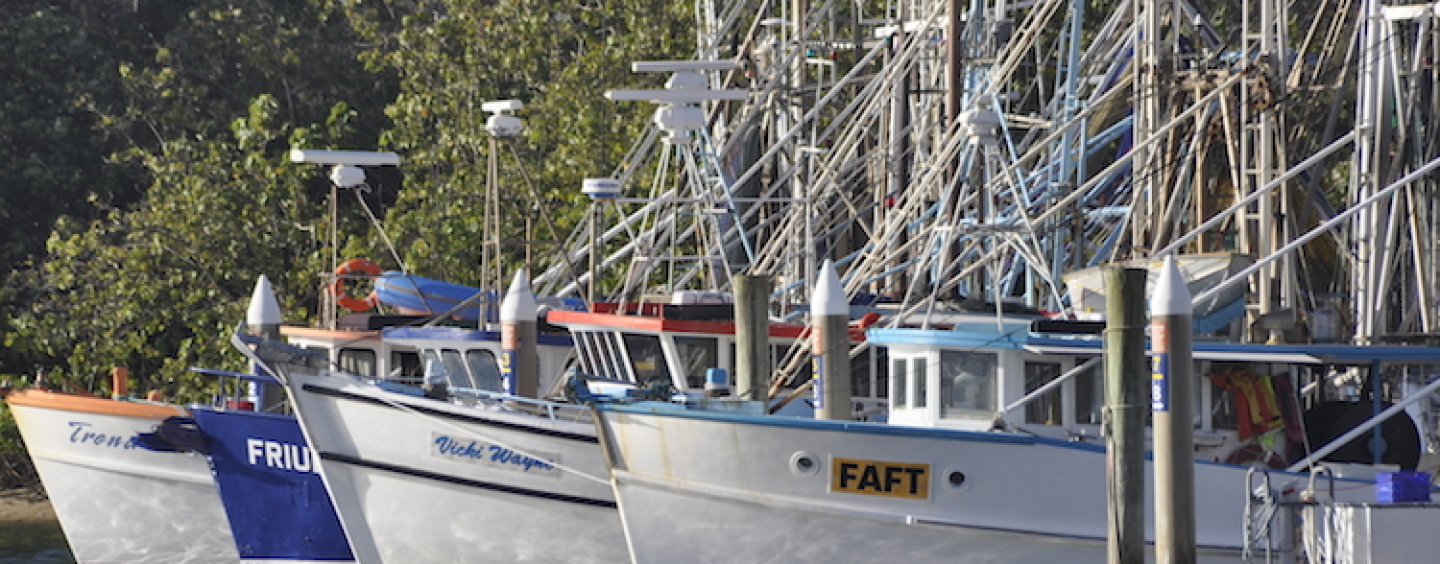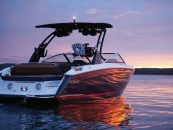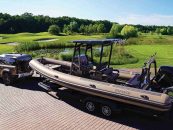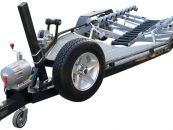Who can miss the oft-photographed trawler boats on the Broadwater? And who hasn’t bought fresh prawns—and more—from the trawlers directly? Roxeen Vaughan offers us a peek into the Gold Coast Fishermen’s Co-operative.
Established in 1970, the Gold Coast Fishermen’s Co-Operative was one of the first developments on the Spit at Main Beach. For decades, trawlers caught and sold their local catch to providers in the seafood industry. Over 10 years ago, the Co-Operative sought approval from the Gold Coast City Council Health and began selling their catch direct to the public from the boat at the best possible price.
Selling directly to the public, the cooperative has provided Gold Coasters fresh eastern king prawns, spanner crabs, Balmain bugs, and bycatch such as squid, octopus and cuttlefish. There are currently 10 trawlers and three spanner crab boats that conduct their activities up to 20 miles off the Gold Coast shores.
The boats
The boats that provide a picturesque view from the Broadwater, are each manned by a skipper and one or two deckhands. Weather permitting, trawler boats go out every night, while spanner crab vessels go out during the day. The boats in the cooperative vary in size and colour, hulls and motor. Some are made of steel, others made of timber, and then some made of fibreglass.
With an almost all-year round trawling season—prawn season from 1 November to 20 September, and crab season from 21 December to 19 November—the cooperative is an active group. Each operator is required to have a commercial license for trawling and crab boats. The trawling sites are also limited, and the cooperative imposes a night criteria for each vessel.
The members of the cooperative are not without their challenges. Diminishing fishing grounds, possible redevelopment of current site, and fuel costs are some of the problems they face. The possibility of nets being hooked up on objects under the water always pose as a challenge. The boats are also boarded at sea and checked for various things by the fisheries patrol. Safety gear is also checked by Maritime Safety Queensland.
The catch
Eastern King Prawns are the most popular prawn amongst seafood lovers and are the main catch of our trawler fleet. The prawns are caught in the waters off the Gold Coast and cooked to perfection on the trawlers.
Spanner Crabs are becoming increasingly popular with Australians as they catch onto this superb Gold Coast seafood product. These crabs are available live and cooked through most of the year with trawlers only taking a break from the 21st of November to the 21st of December.
Balmain Bugs are very high in demand and are available either cooked, green, and sometimes even sold live. The catch is best in the winter months so check our Today’s Catch updates for availability.
One of the by-products of the trawler fleet’s catch is fresh squid and octopus. Often sold frozen and whole, the squid and octopi are great value for money and are delicious in a variety of recipes.
____________________________________________________
Quick Facts on Trawl Fishery in Queensland
- The trawl fishery is Queensland’s largest commercial fishery, with about 600 vessels producing up to 10,000 tonnes of product worth about $110 million each year.
- There are two basic types of trawling: otter trawling and beam trawling. The otter trawl fishery which operates in more-open waters is by far the larger, accounting for about 95% of the total harvest taken each year.
- Trawlers are allowed to tow more than one otter trawl or beam trawl. However, there are restrictions on how much net and the type of net that may be used. These restrictions differ in different parts of Queensland.
- There are two types of trawl gear—beam and otter—and they are both used to take prawns. The main difference is in how they keep the net open.
- The fisher must have a commercial fisher licence. The boat must be licensed under a Queensland Commercial Fishing Boat Licence (CFBL).
- Regulations on commercial fishing include limits on operating time, area closures, boat size restrictions, net size restrictions, and catch limits.
- Commercial fishers have a legal obligation to report informationabout their fishing activities in a compulsory daily logbook. All trawl fishers must supply data about their day’s catch, location fished and time spent fishing. The data provided is used to assess and monitor the status of individual species and fisheries in Queensland to ensure a long-term sustainable fishery.
- Boats operating in certain fisheries or areas are also obliged to have on board a vessel monitoring system (VMS), which tracks the position of their boat, to monitor compliance with closures and other restrictions.
(Source: www.daf.qld.gov.au/fisheries)






























